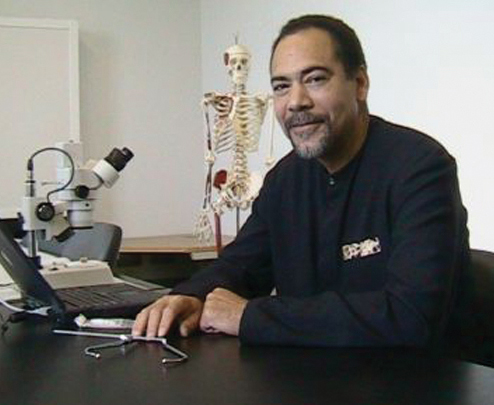Work on display
Research informs New York African Burial Ground's visitor center
Years of work by a William & Mary faculty member and his students went on display in February when the National Park Service opened the New York African Burial Ground's interactive visitor center in Lower Manhattan.
Michael Blakey, National Endowment for the Humanities Professor at the College of William and Mary, served as the lead scientist at the burial ground, which is the first national monument dedicated to Africans of early New York and Americans of African descent. The site's visitor center showcased much of the research that was done as a result of the work that Blakey and his students have completed.
During his decade of work at the burial ground, Blakey coordinated research of the site and its remains among teams of archaeologists, biological anthropologists and historians, among others. The archaeological and historical contexts of the remains were analyzed by Howard University research teams and the Institute for Historical Biology (IHB) at William & Mary, which Blakey directs.
Over the last few years, a comparative database on the bioarchaeology of the African Diaspora was developed at the IHB. That database, which has been used by about a dozen William & Mary undergraduates for research projects, provided much of the information that was used to design the permanent exhibit in the new visitor center.
Blakey and a group of four William & Mary graduate students assisted the firm that was hired to design the visitor center. The firm met with Blakey and other specialists to come up with drafts of what the exhibition would look like. Those drafts were then brought to the students who examined everything from the language to the data, using the IHB's database.
According to a press release from the National Park Service, the new visitor center will seek to "tell the story of free and enslaved Africans in early New York and the role of the African descendant community in preserving the burial ground following its 1991 rediscovery." The new center includes four exhibit areas, a 40-person theatre and a store.
For more on the IHB, visit
http://www.wm.edu/as/anthropology/research/ihb/. For more on the New
York African Burial Ground, visit http://www.nps.gov/afbg/index.htm. 
















